Vienna, Austria
< Start at the beginning of this series: Grand European River Cruise
One of the things I love about doing this blog is reviewing the photos from our trips. Sometimes I can actually visualize our guide explaining a landmark’s significance, while others I rely on Jim’s recollection. Sometimes I take photos if a building has a story, but other times I just like its looks – its architecture or its beauty. When I go to work on a blog, I do some research into the nameless buildings, and sometimes I get lucky – while others remain a mystery and a captionless photo that I just liked enough to keep.
Another thing I’ve noticed recently is that while I’m doing the research to give you just a little information about an area, I’m getting sidetracked – following the story further – making it more time-consuming. Although history class in high school didn’t excite me much, digging deeper into the things we’re seeing on this cruise has hooked me. So that’ll be my excuse for these blogs taking so long – not the fact that we, along with probably everyone reading this – have a lot going on in our lives.
Called the “City of Music” because of its musical heritage, Vienna is also referred to as the “City of Dreams” because Sigmund Freud lived and worked there until 1938. Vienna is also known for its quality of life, ranking high (if not first), for many years in a “Quality of Living” survey of hundreds of cities around the world. It is a city with almost two million Austrians, with around fifteen million tourists per year and is one of the wealthiest regions in the European Union.
Panoramic Vienna
Today we met our guide for a half-day bus and walking tour that would take us along the remarkable Ringstrasse – a grand boulevard that circles historic Old Town in Vienna. Sometimes called “Ring Road” and dubbed the most beautiful boulevard in the world, this masterpiece of urban planning connected the Vienna suburbs to the center of imperial power. Lined with palaces, elegant public buildings and grand residences, today’s route was sure to please.
If you like the photo below of the Österreichische Postsparkasse taken while passing by in a bus, please take a minute and click the link to check out the closeup photos of the exterior, as well as some stunning photos inside. It was a postal savings bank and is now BAWAG P.S.K., the 4th largest bank in Austria. I wish we would have had more time to see it in person, or at least been able to get up close to see the designs on the exterior.
If you peek between the buildings in the second photo below, you’ll see Palais Coburg Residenz, a Neoclassical palace built in 1845. Its last private owner was the widow of a prince, who lived there with her family until the 1970s. Today it’s a luxury five star boutique hotel with 33 suites ranging from $800-$3,000 a night. The hotel was the venue for the Iran nuclear deal in 2015.
The third photo is Schwarzenberg Square – named after one of the most significant noble families in this area. You may remember that name from my Kutna Hora post a while back, where their coat of arms was created out of human bones. May sound a little creepy, but it’s worth a look. The statue in the square is Austrian Field Marshal Karl Philipp, Prince of Schwarzenberg.
We got a pretty good side view of the Vienna State Opera Building, but you can find photos from the front and a panoramic tour at the link. The quote below is also from that link.
“Wiener Staatsoper is one of the leading opera houses in the world… Every night, you can witness world-class artists alongside the permanent ensemble members on the stage and at the conductor’s desk, accompanied by a unique orchestra: the orchestra of Wiener Staatsoper, whose members at the same time make up the Vienna Philharmonic Orchestra.
In 2013, director Dominique Meyer launched Wiener Staatsoper live at home, a project for digital outreach: It allows opera and ballet lovers all over the world to follow the performances of the Wiener Staatsoper on their digital devices.”
The absolutely gorgeous photo below at night is by Markus Leupold-Löwenthal and shows the rear of the opera house and the stage wings.
And here we are at last – at the walking part of our tour, where photos are sure to improve. We start out at Maria-Theresien-Platz, a large public square where a large statue of Maria-Theresa is flanked by two nearly identical buildings – the Natural History Museum (Naturhistorisches Museum) and the Art History Museum (Kunsthistorisches Museum).
The Holy Roman Empress Maria Theresa Walburga Amalia Christina was determined to carry on the Hapsburg lineage during a time when only men could inherit the family riches, countries and possessions. Her father (Emperor Charles VI) created the Pragmatic Sanction in 1713 to ensure that the Habsburg possessions could be inherited by a daughter, but upon his death in 1740, several countries took exception to that rule and promptly invaded. Over the course of the War of the Austrian Succession, despite the loss of a few minor territories, Maria Theresa successfully defended her rule over most of the Habsburg empire and continued her 40-year reign.
“Maria Theresa was a key figure in the power politics of eighteenth-century Europe who brought unity to the Habsburg Monarchy and was considered one of its most capable rulers. Not only did she successfully fulfill her public duties but she also at the same time bore and brought up 16 children including Marie Antoinette and Leopold II. By doing so she became a role model for many women.” – READ MORE
Such beautiful detail on these buildings, and almost mirror images of each other, with the exception of the statues on the facade.
We come to the Outer Castle Gate (Äußeres Burgtor) also called Heroes’ Gate (Heldentor) – the main entrance to Heldenplatz Square. Built in 1824, it was rebuilt as a war memorial in 1934. It has five massive wooden doors and inside is a Tomb of the Unknown Soldier.
Heroes’ Gate from inside the square looks almost nothing like the outside, with the exception of the black circles along the top. The inscriptions are different as well, with the outside translating to “Francis I, Emperor of Austria, 1824” and the inside translating to “Justice is the foundation of the rule” which was the motto of Emperor Franz I of Austria.
As we pass through the gate, the Neue Burg comes into view. The photo below shows the first of two horseman statues in the square. This statue of Archduke Charles of Austria was inaugurated in 1860 and was meant to glorify the Habsburg dynasty as great Austrian military leaders. Inside the square, there are monuments dedicated to the victims of the two World Wars and those who died in the fight for freedom in Austria.
Construction on the Neue Burg (New Castle) began in the late 19th century and finished in 1913. In the original plan, it was to be twice the size, with the addition of another building facing this one to add symmetry to the square. Time and money ran out and it was never completed. I say hooray to that, since the views of Vienna are amazing from the open area where the other building would have been – as you’ll see in a photo below.
Heldenplatz Square is quite an expansive and remarkable square, with many important events taking place here, most notably Adolf Hitler’s ceremonial announcement of the Austrian annexation to Nazi Germany on March 15, 1938.
The World Museum Vienna (The Weltmuseum Wien) is shown in the photo below (left). “Many exhibits originate from the numerous travels of the Habsburg archdukes. The Weltmuseum Wien deals with the cultural diversity of humanity and documents Austria’s rich historic relations with the world with its global collection.”
We continue our walk to the courtyard known as Franzensplatz (below), where we see a monument to Franz Joseph I, who ruled Austria from 1848-1916. Surrounding the courtyard is Amalienborg Castle, which shows off its fabulous sundial, clock and bell tower.
A beautiful red Swiss Gate (Schweizertor) leads to the Swiss Court (Schweizerhof) – the oldest part of the Hofburg – and the entrance to the Imperial Treasury (Kaiserliche Schatzkammer). The Treasury houses crowns and jewels – including the insignia and jewels of the Holy Roman Empire. Unfortunately, that was not part of our tour.
And we’re off to Joseph Square (Josefsplatz), which of course includes a statue of Emperor Joseph II.
“Joseph II was Holy Roman Emperor from August 1765 and sole ruler of the Habsburg lands from November 1780 until his death. He was the eldest son of Empress Maria Theresa and her husband, Emperor Francis I, and the brother of Marie Antoinette.” – READ MORE
It seems as though the statue of Joseph II serves another purpose by providing a place to sit in the shade for weary tourists!
As you’ve probably gathered by now, the Hofburg is the former principal imperial palace of the Habsburg dynasty rulers. The Imperial Chancellery Wing (the second photo below) serves as the official residence and workplace of the President of Austria.
Somewhere between Josefsplatz and our next stop is the Spanish Riding School for Lipizzan horses. The school allows public viewing of some training sessions and offers performances to showcase its four centuries of tradition. The leading horses and riders of the school tour and perform all over the world. Since we didn’t see anything other than a courtyard in the center of the school, I got no photos. A performance of the Lipizzan horses is an excursion that was available through Viking, be we didn’t sign up for that one.
St. Michael’s Square (Michaelerplatz) is one of Vienna’s most beautiful tourist destinations.
One of the most impressive wings of the Imperial Palace is the Michaelertor – the entrance gate to the Hofburg. Originally designed in the 1720s, the original Baroque design was finally completed in 1893. The entrances are decorated with immense statues of Hercules and at either end are large wall fountains and more sculptures. It is just fabulous!
Directly across from Michaelerplatz is Looshaus, now the Raiffeisenbank (pictured below). When Looshaus was being built in the early 1900s, its modern design caused quite a stir. Boring by Vienna’s prominently-Baroque standards – with straight lines and little or no decoration – construction was shut down temporarily until Adolf Loos agreed to decorate the facade with balcony flower boxes.
“Emperor Franz-Joseph I despised the modern façade opposite his palace and it is said that the curtains in the wing opposite the Looshaus were always closed so he wouldn’t have to look at it. Today the building is considered an example of groundbreaking modern architecture.” – from aviewoncities.com
The Palace Building on Kohlmarkt 16 (below) is one of the most beautiful buildings in Vienna (in my opinion). Pure white, with subtle gold bling, this building was built in 1892, replacing 3 other houses. Several retail businesses reside on ground level, with the Manzsche University Bookstore opening in 1912. Just so I don’t get scolded for not showing any decoration, I added a flower photo below.
From the center of the street, we can look back at St. Michael’s Square and the Hofburg (below left). After a nice stroll through a very exclusive shopping area, we are able to see St. Peter’s Church (below center). Although they are not the beautiful bookends they appear to be, there is only one street between them.
The statue in the third photo, is called the Plague Column, which was created after the Great Plague epidemic in 1679. This memorial is one of the most well-known and prominent sculptures in Vienna.
Other cities on this cruise so far had brightly colored buildings with many different styles of architecture, sometimes in the same block. The churches were covered in gilding, flanked by gargoyles, cherubs and statues. Quite frankly some were over the top. Although there were some exceptions, Vienna’s buildings seemed more subdued, more consistent in style, similarly painted in grays, whites and tans. And just because the buildings didn’t scream LOOK AT ME, we most certainly did.
St. Stephan’s Cathedral (Stephansdom) is the mother church of the Roman Catholic Archdiocese of Vienna and the seat of the Archbishop of Vienna. Supporting 13 bells, the tallest tower is almost 450 feet and can be accessed by 343 steps for amazing views of Vienna. Click on the link for a gorgeous website. Although we’re not able to view it in English, the photos are magnificent and are well worth a look.
“On the roof of St. Stephen’s Cathedral, colorful roof tiles were laid to create the Royal and Imperial double-headed eagle and the coat of arms of the city of Vienna.” Since by the angles of my photos, we didn’t enter on that side, please visit the website to see that second roof. It’s really something!
“St. Stephen’s Cathedral is the symbol of Vienna. Construction commenced in the 12th century. Today, it is one of the most important Gothic structures in Austria.”
We left the church in awe and overwhelmed by this fabulous day. I think I’ll stop here and leave our last excursion in Vienna till next time.
Next up: Vienna to Melk, Austria
Happy trails,
Barb

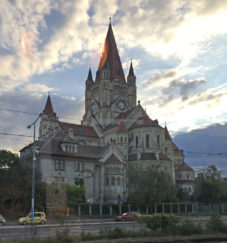

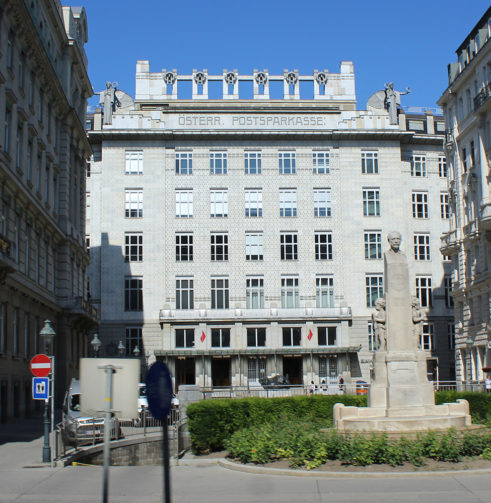




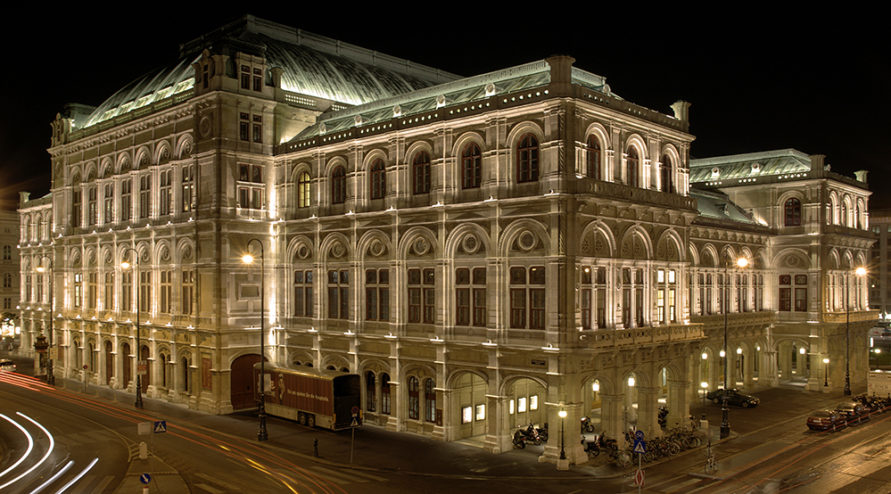

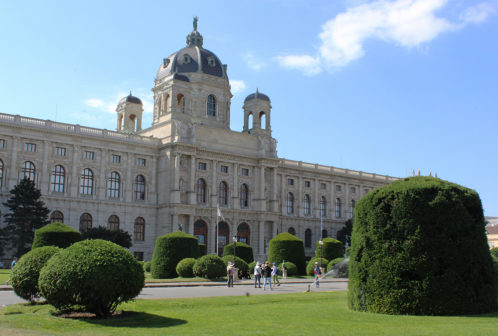
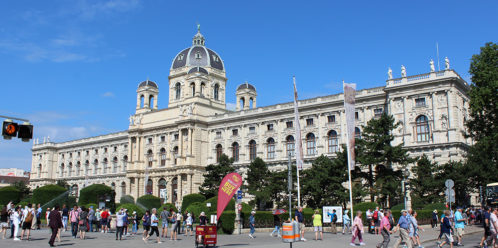
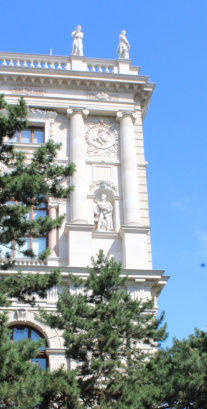
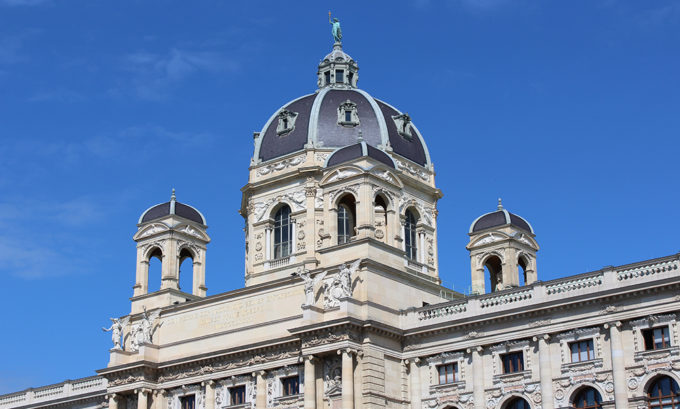



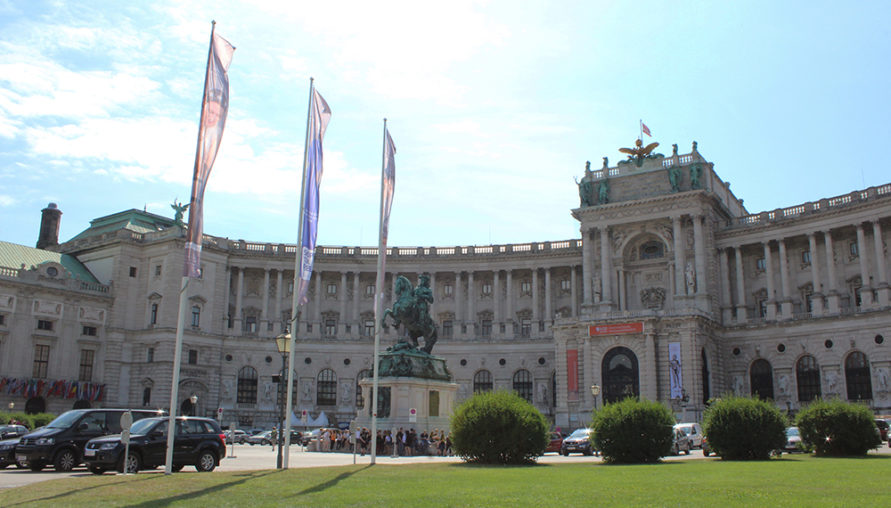



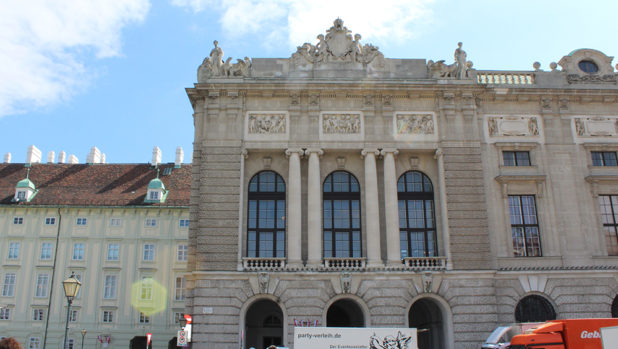



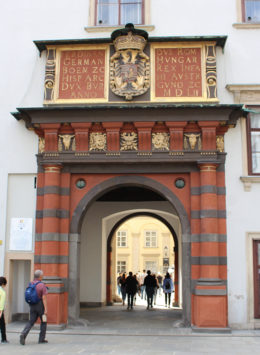







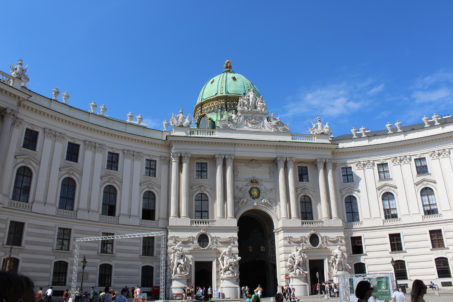
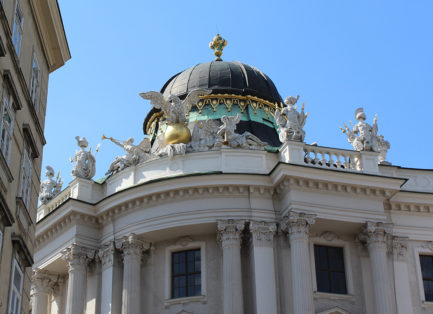

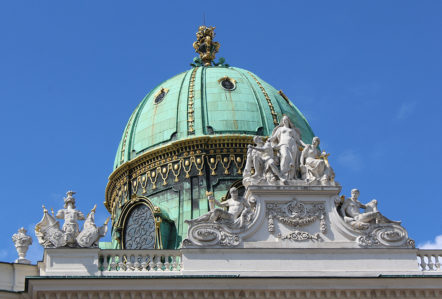

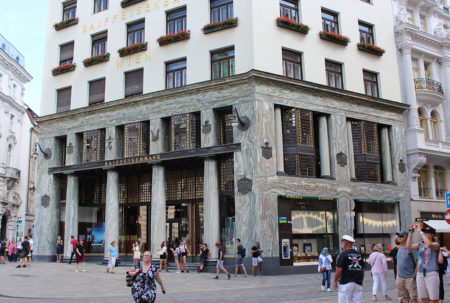
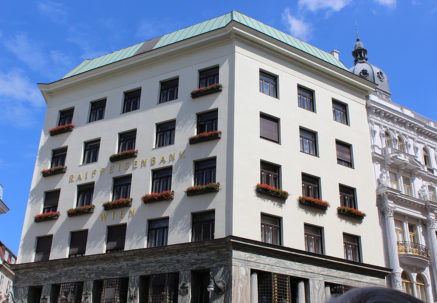
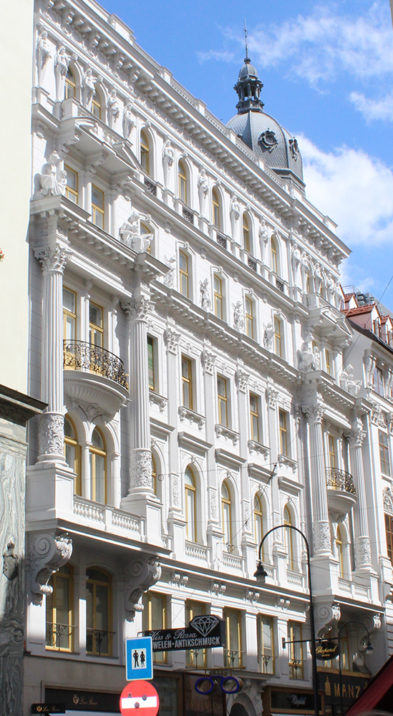

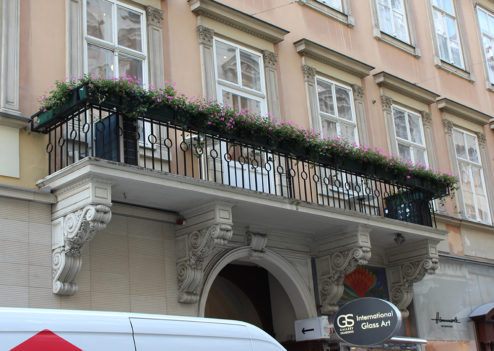

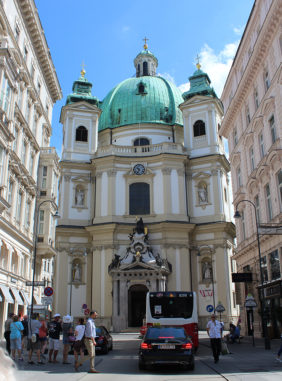







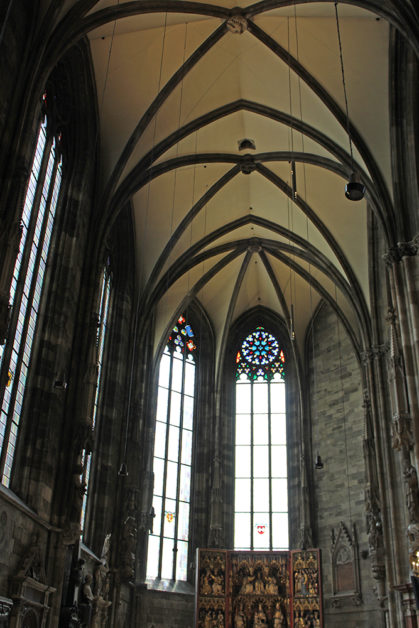
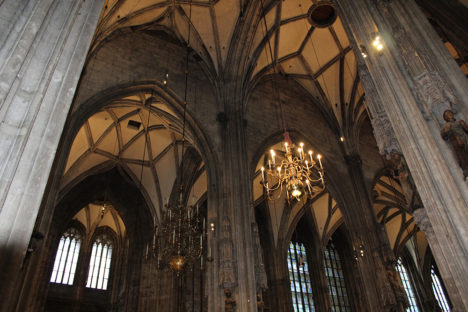

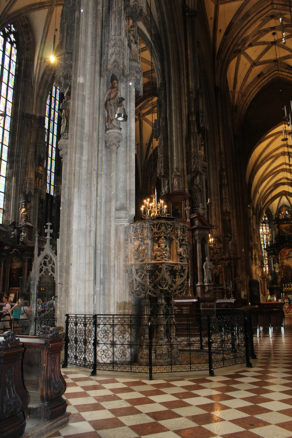
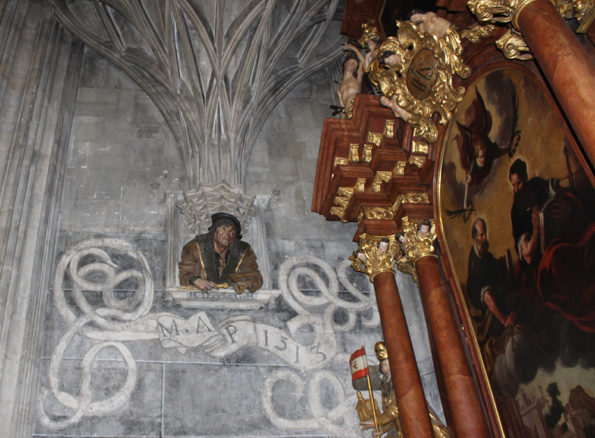








It is definitely beautiful! You would love it!
Everything is beautiful. I need to plan a trip to include Austria in the future.